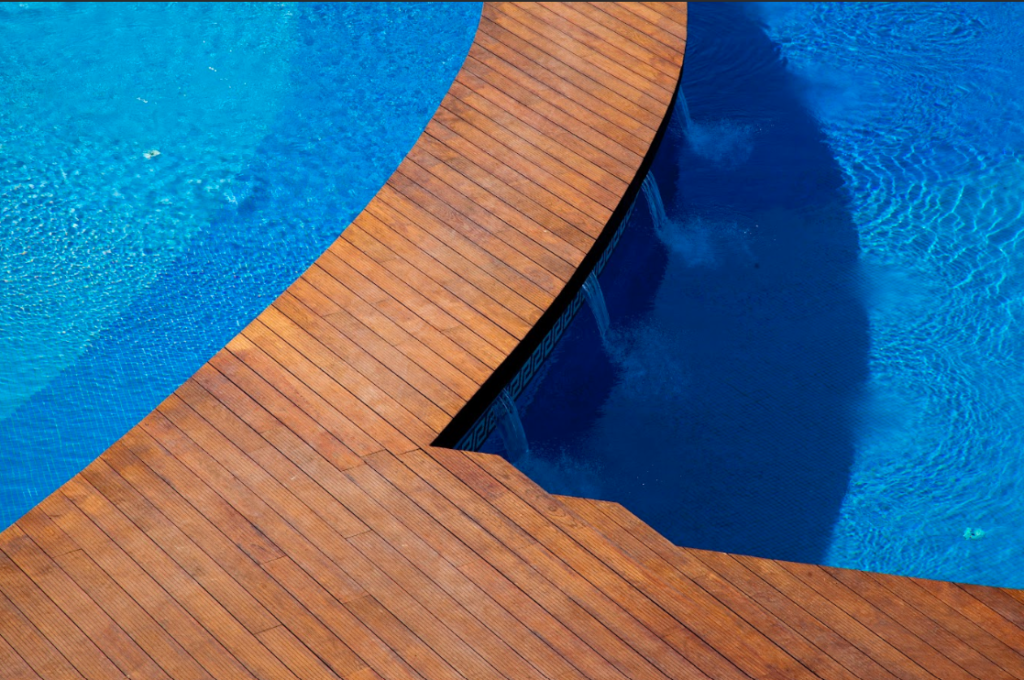Thermally modified wood and Shou Sugi Ban represent two unique approaches to improving wood’s durability and aesthetic qualities. These methods, both rooted in heat treatments, cater to different needs and preferences, making them versatile options for construction and design.
By understanding their processes, features, and applications, builders and consumers can choose the right material for their specific projects.
What is Thermally Modified Wood?
Thermally modified wood undergoes a heat treatment process at temperatures between 356°F and 446°F in an oxygen-free environment. This chemical-free method alters the wood’s cellular structure, enhancing dimensional stability and reducing its moisture content. The result is a material with increased resistance to decay, insects, and warping, making it ideal for long-term use in diverse environments.
Why Choose Thermally Modified Wood? Key Features and Benefits
- Reduced moisture absorption: Enhanced dimensional stability prevents swelling, shrinking, and warping over time.
- Chemical-free treatment: The sustainable heat-only process aligns with eco-conscious building practices.
- Uniform coloring: The rich hues, ranging from golden tones to deep browns, add timeless elegance to designs.
Thanks to these characteristics, thermally modified wood excels in both interior and exterior applications. Builders and architects frequently choose it for projects like siding, decking, flooring, and furniture, appreciating its longevity and eco-friendly credentials.
Shou Sugi Ban: Traditional Craft Meets Modern Aesthetics
Shou Sugi Ban, also called Yakisugi, is a centuries-old Japanese technique that involves charring the surface of the wood. The process includes burning the wood to create a protective charred layer, which is then cooled, cleaned, and often finished with natural oil. Historically, it was used to preserve Japanese cedar, enhancing its resistance to pests, rot, and weathering.
Unique Characteristics of Shou Sugi Ban
- Striking textures: The charred surface creates bold, tactile finishes that stand out in any design.
- Natural protection: The charred layer offers resistance to rot, pests, and UV damage.
- Aesthetic versatility: Available in finishes that range from deep, smoky blacks to intricate natural patterns.
While originally used for preservation, Shou Sugi Ban has gained popularity in modern architecture and design for its artistic appeal. It’s particularly effective in creating dramatic focal points, whether used for siding, fencing, accent walls, or custom furniture.
Comparing Thermally Modified Wood and Shou Sugi Ban

While both thermally modified wood and Shou Sugi Ban enhance the durability and appearance of wood, their distinct processes and characteristics make them suited for different applications and design preferences.
Process and Depth of Treatment
Thermally modified wood undergoes structural changes throughout the board, enhancing its core properties. By contrast, Shou Sugi Ban only alters the surface, with the charred layer providing localized protection. This difference affects their respective long-term performance and maintenance requirements.
Durability and Longevity
- Thermally Modified Wood: The material resists moisture, insects, and decay, with its enhanced stability reducing swelling and warping over time.
- Shou Sugi Ban: Its durability relies on the integrity of the charred surface, which may need re-oiling or other upkeep to maintain its protective qualities.
Aesthetic Appeal
- Thermally Modified Wood: Offers a natural appearance with uniform coloring and refined grain patterns, ideal for timeless designs.
- Shou Sugi Ban: Features a bold, textured finish that pairs well with modern or industrial aesthetics.
Maintenance Needs: What to Expect
Thermally modified wood requires minimal maintenance, naturally aging over time with little intervention. Shou Sugi Ban, while durable, may need regular oiling to preserve its appearance and protection, particularly in harsh outdoor environments. Understanding these maintenance requirements helps determine which material suits your project’s environment and demands.
Environmental Impact and Sustainability
One of the most compelling advantages of thermally modified wood is its sustainable production. The process relies solely on heat and steam, using no chemicals, and frequently incorporates responsibly sourced species like Ash, Pine, and Ayous. This aligns with environmentally conscious building practices while reducing reliance on less sustainable materials.
Shou Sugi Ban, when practiced traditionally, also aligns with eco-friendly principles. However, the sustainability of this method depends on the sourcing of the wood. Modern adaptations may use unsustainably harvested materials, making it important to verify the wood’s origin.
Applications for Various Needs
Thermally Modified Wood
- Exterior Applications: Siding, decking, pergolas, and garden structures.
- Interior Applications: Flooring, cabinetry, and furniture.
Shou Sugi Ban
- Exterior Applications: Siding, fencing, and architectural cladding.
- Interior Applications: Accent walls, furniture, and decorative installations.
Cost and Value

The upfront cost of thermally modified wood reflects its intensive treatment process. However, its superior durability and minimal maintenance requirements often make it a cost-effective choice in the long term. Shou Sugi Ban’s pricing varies widely depending on the wood species and craftsmanship involved in its production. Both materials provide excellent value when matched to their intended uses.
Selecting the Right Wood for Your Project
Choosing between thermally modified wood and Shou Sugi Ban depends on the specific requirements of your project. For applications requiring durability, stability, and low maintenance, thermally modified wood is often the superior choice. Meanwhile, Shou Sugi Ban is ideal for projects prioritizing unique aesthetics and artistic appeal. Understanding the strengths of each method ensures the selection of the right material for lasting results.
Optimizing Wood Choices for Longevity and Design
When exploring different wood treatments, balancing performance with visual appeal is key to achieving project success. Thermally modified wood and Shou Sugi Ban each offer distinct advantages that cater to various design goals. Discover the best wood solutions for durability and aesthetics. Visit How Long Does Thermally Modified Wood Last to learn how these materials can transform your projects.


